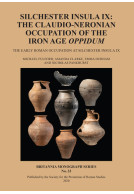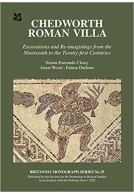Google Books previews are unavailable because you have chosen to turn off third party cookies for enhanced content. Visit our cookies page to review your cookie settings.
The Emperor Nero's Pottery and Tilery at Little London, Pamber, by Silchester, Hampshire (Paperback)
The Excavations of 2017
Imprint: Roman Society Publications
Series: Britannia Monographs
Pages: 216
Illustrations: 149
ISBN: 9780907764502
Published: 28th October 2022
Script Academic & Professional
Series: Britannia Monographs
Pages: 216
Illustrations: 149
ISBN: 9780907764502
Published: 28th October 2022
Script Academic & Professional
You'll be £30.00 closer to your next £10.00 credit when you purchase The Emperor Nero's Pottery and Tilery at Little London, Pamber, by Silchester, Hampshire. What's this?
+£4.99 UK Delivery or free UK delivery if order is over £40
(click here for international delivery rates)
Need a currency converter? Check XE.com for live rates
(click here for international delivery rates)
Need a currency converter? Check XE.com for live rates
Previously suspected on the basis of a tile stamped with the name and titles of the emperor Nero found alongside other brick and tile in the ploughsoil, excavation of two tile kilns at Little London near Silchester, Hampshire confirmed production during the reign of Nero. In addition to the manufacture of standard bricks and roofing materials, the kilns produced the more specialist materials required for building bath-houses. Work on the fabrics and distinctive, roller-stamped flue-tiles shows that products reached a wide variety of destinations between Cirencester, some 100 km to the north-west, and Chichester, on the south coast, though Silchester appears to have been the main market and is the only location where Nero-stamped tile has so far been found. A suggestion is made linking the stamped tile to the visit to Britain by the emperor’s trusted freedman, Polyclitus in the aftermath of the Boudican revolt. An unexpected discovery was the ancillary production from at least three pottery kilns of a wide range of pre-Flavian domestic wares, so far only identified in Silchester and its environs. Alongside the publication of the kilns there are illustrated catalogues of the complete range of brick and tile types produced as well as of the pottery. Other reports include analysis of the fuels used and a suite of radiocarbon dates which support the pottery evidence for production ceasing in the early Flavian period. Analysis of the numerous animal foot-impressions on the bricks presents one aspect of the environment of the kilns.
Other titles in the series...
Other titles in Roman Society Publications...


















